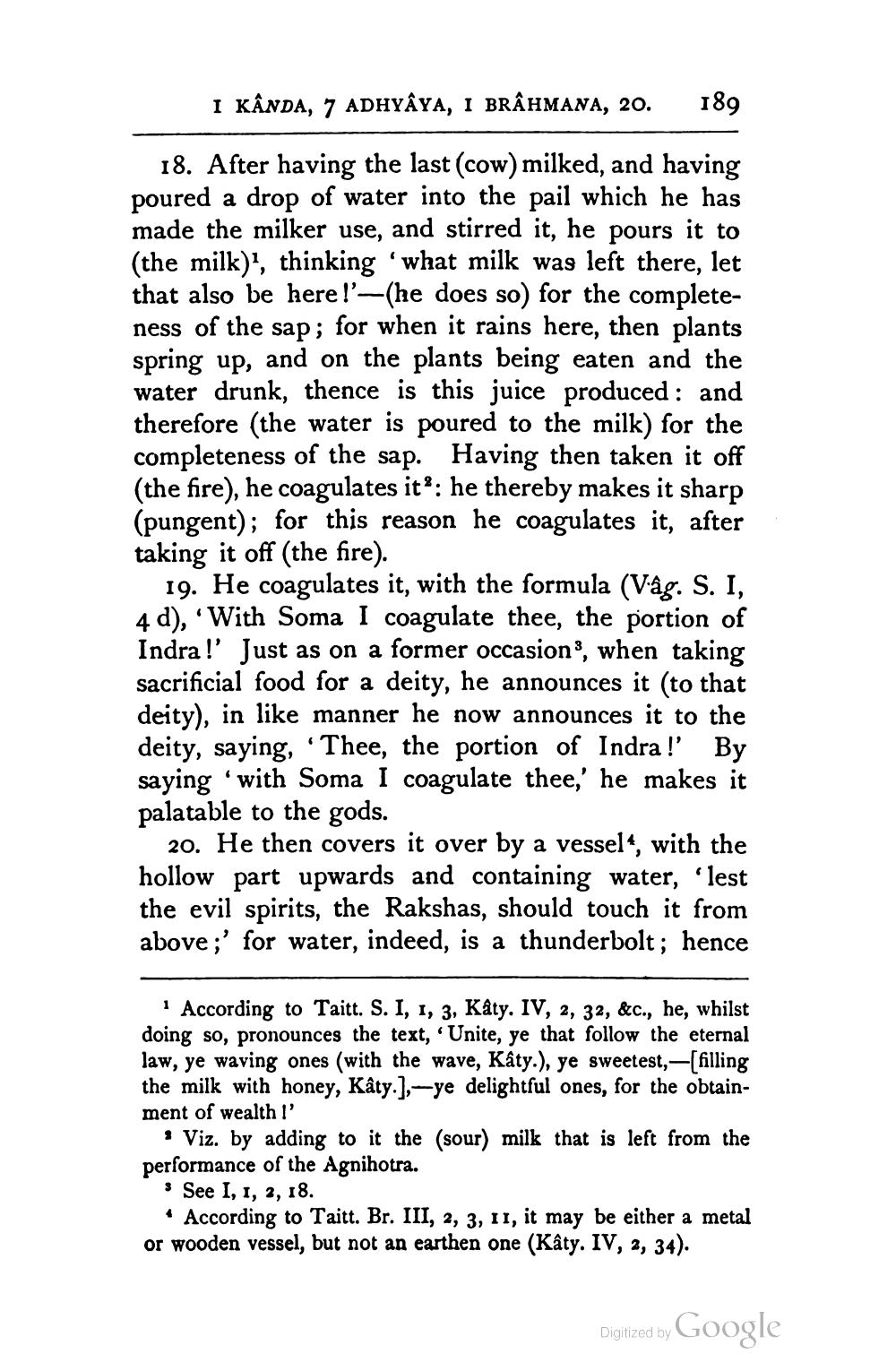________________
I KANDA, 7 ADHYAYA, I BRAHMANA, 20.
189
18. After having the last (cow) milked, and having poured a drop of water into the pail which he has made the milker use, and stirred it, he pours it to (the milk)', thinking 'what milk was left there, let that also be here!'-(he does so) for the completeness of the sap; for when it rains here, then plants spring up, and on the plants being eaten and the water drunk, thence is this juice produced: and therefore (the water is poured to the milk) for the completeness of the sap. Having then taken it off (the fire), he coagulates it2: he thereby makes it sharp (pungent); for this reason he coagulates it, after taking it off (the fire).
19. He coagulates it, with the formula (Vâg. S. I, 4 d), 'With Soma I coagulate thee, the portion of Indra!' Just as on a former occasion3, when taking sacrificial food for a deity, he announces it (to that deity), in like manner he now announces it to the deity, saying, 'Thee, the portion of Indra!' By saying with Soma I coagulate thee,' he makes it palatable to the gods.
20. He then covers it over by a vessel, with the hollow part upwards and containing water, 'lest the evil spirits, the Rakshas, should touch it from above;' for water, indeed, is a thunderbolt; hence
According to Taitt. S. I, 1, 3, Kâty. IV, 2, 32, &c., he, whilst doing so, pronounces the text, Unite, ye that follow the eternal law, ye waving ones (with the wave, Kâty.), ye sweetest,-[filling the milk with honey, Kâty.],-ye delightful ones, for the obtainment of wealth !'
Viz. by adding to it the (sour) milk that is left from the performance of the Agnihotra.
See I, 1, 2, 18.
• According to Taitt. Br. III, 2, 3, 11, it may be either a metal or wooden vessel, but not an earthen one (Kâty. IV, 2, 34).
Digitized by
Google




